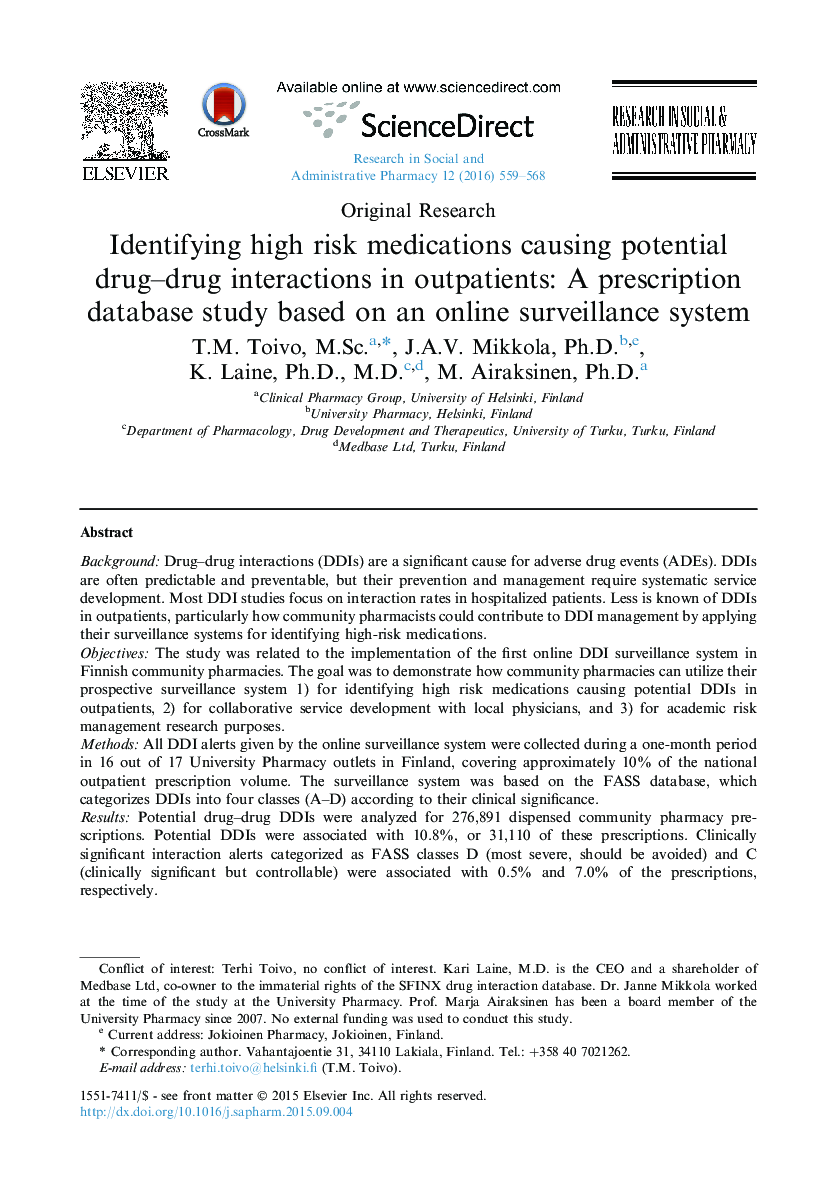| کد مقاله | کد نشریه | سال انتشار | مقاله انگلیسی | نسخه تمام متن |
|---|---|---|---|---|
| 2508204 | 1117599 | 2016 | 10 صفحه PDF | دانلود رایگان |
BackgroundDrug–drug interactions (DDIs) are a significant cause for adverse drug events (ADEs). DDIs are often predictable and preventable, but their prevention and management require systematic service development. Most DDI studies focus on interaction rates in hospitalized patients. Less is known of DDIs in outpatients, particularly how community pharmacists could contribute to DDI management by applying their surveillance systems for identifying high-risk medications.ObjectivesThe study was related to the implementation of the first online DDI surveillance system in Finnish community pharmacies. The goal was to demonstrate how community pharmacies can utilize their prospective surveillance system 1) for identifying high risk medications causing potential DDIs in outpatients, 2) for collaborative service development with local physicians, and 3) for academic risk management research purposes.MethodsAll DDI alerts given by the online surveillance system were collected during a one-month period in 16 out of 17 University Pharmacy outlets in Finland, covering approximately 10% of the national outpatient prescription volume. The surveillance system was based on the FASS database, which categorizes DDIs into four classes (A–D) according to their clinical significance.ResultsPotential drug–drug DDIs were analyzed for 276,891 dispensed community pharmacy prescriptions. Potential DDIs were associated with 10.8%, or 31,110 of these prescriptions. Clinically significant interaction alerts categorized as FASS classes D (most severe, should be avoided) and C (clinically significant but controllable) were associated with 0.5% and 7.0% of the prescriptions, respectively.Methotrexate and warfarin had the highest risk of causing potentially serious (class D) interactions. These interaction alerts were most frequently between methotrexate and NSAIDs and warfarin and NSAIDs. In general, NSAIDs were the most commonly interacting drugs in this study.ConclusionsThis study demonstrates that community pharmacies can actively contribute to DDI risk management and systematically use their surveillance systems for identifying patients having clinically significant DDIs. The findings also indicate that the majority of potentially serious interactions in outpatients involve a limited number of drugs, particularly NSAIDs, warfarin and methotrexate. Further research should focus on community pharmacists' involvement in DDI risk management in collaboration with local health care providers.
Journal: Research in Social and Administrative Pharmacy - Volume 12, Issue 4, July–August 2016, Pages 559–568
